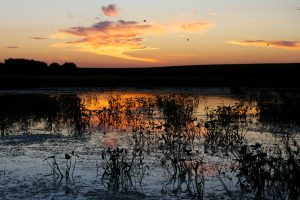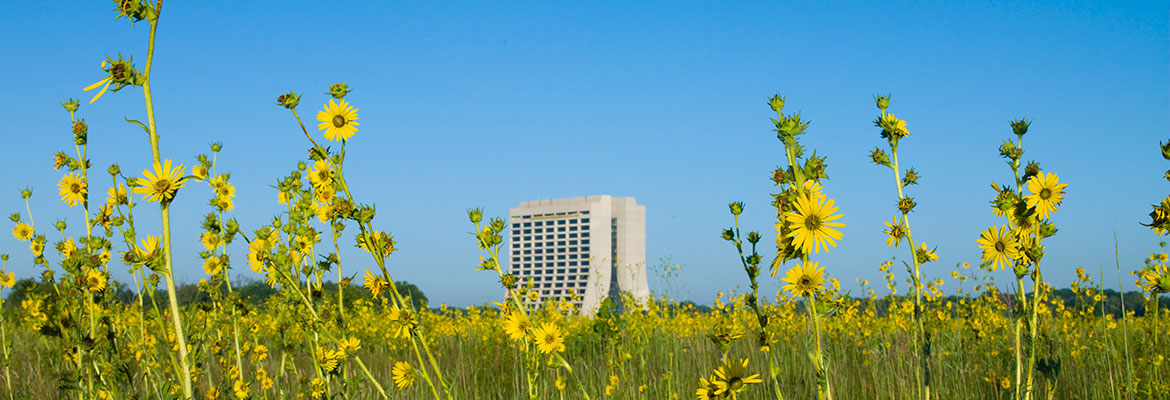
Marshes are seasonally flooded or inundated wetlands with a mix of grasses, sedges, reeds, and aquatic plants. Pictured is Wilson Street Marsh at dusk. Photo credit: T. Schramer
Marshes are seasonally flooded or inundated wetlands with a mix of grasses, sedges, reeds, and aquatic plants. The depth of the basin, fire frequency, and herbivore activity, among other factors, determine vegetation structure and water levels. Variations in groundwater levels, surface runoff volumes, and annual precipitation cause wetlands to experience complete drawdown periods, sometime lasting years, to periods of partial or total annual inundation. Marshes develop mostly in glacial kettle basins, potholes, or swales, typically within a larger prairie complex. Typical plants include soft-stemmed bulrush (Scirpus validus), river bulrush (Scirpus fluviatilis), dark green bulrush (Scirpus atrovirens), bur reed (Sparganium eurycarpum), cattails (Typhus spp.), sweet flag (Acorus calamus), swamp milkweed (Asclepias incarnata), arrowheads (Sagittaria spp.), and smartweeds (Persicaria spp.). Invasive species controlled are the same as in sedge meadow communities. Marsh habitats are burned every few years to retain herbaceous vegetation and limit shrub growth.
Examples of marsh habitat at Fermilab include: Wilson Street Marsh, Nepese Marsh, and several of the lakes at the east side of Fermilab such as A.E. Sea, DUSAF Pond and the Sea of Evanescence.

